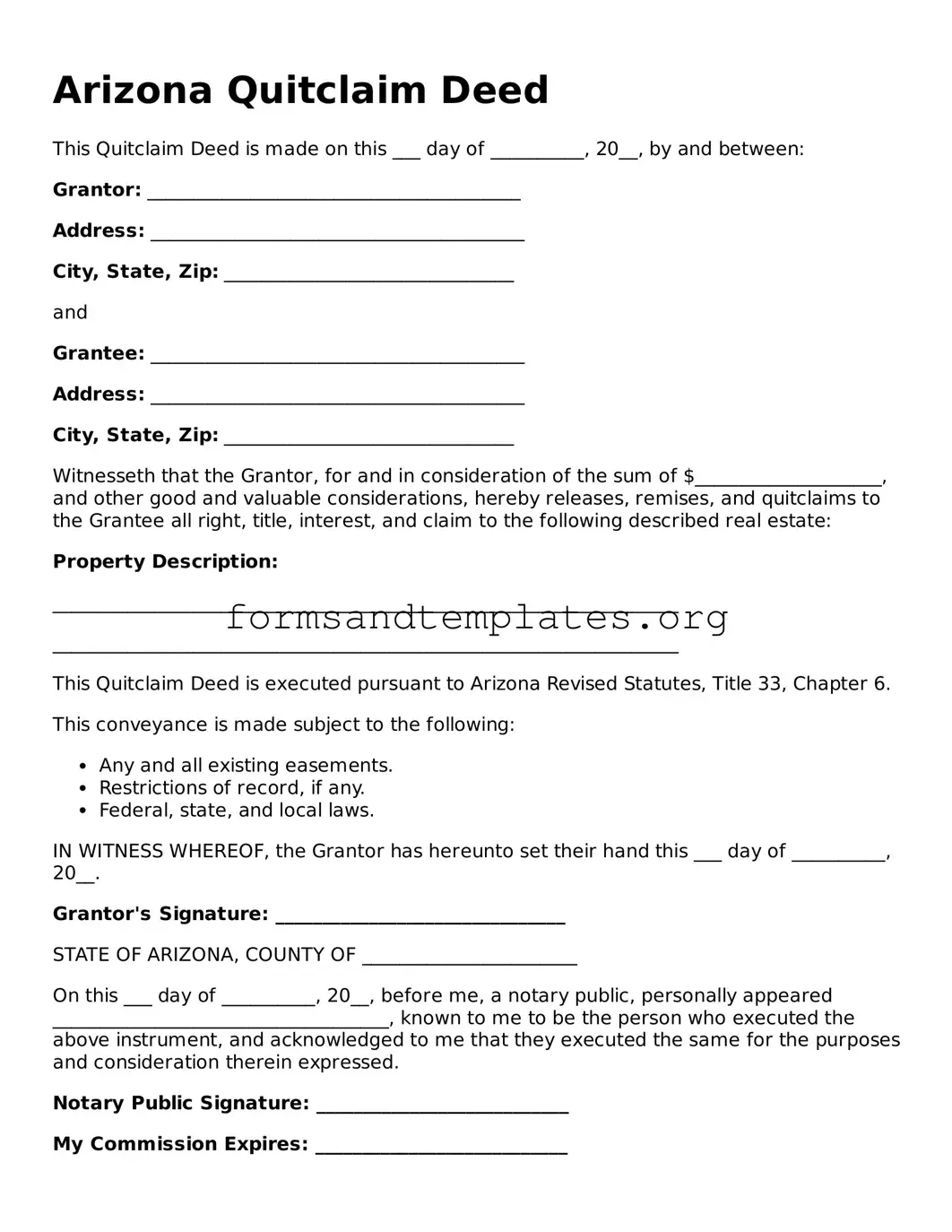Arizona Quitclaim Deed
This Quitclaim Deed is made on this ___ day of __________, 20__, by and between:
Grantor: ________________________________________
Address: ________________________________________
City, State, Zip: _______________________________
and
Grantee: ________________________________________
Address: ________________________________________
City, State, Zip: _______________________________
Witnesseth that the Grantor, for and in consideration of the sum of $____________________, and other good and valuable considerations, hereby releases, remises, and quitclaims to the Grantee all right, title, interest, and claim to the following described real estate:
Property Description:
___________________________________________________________________
___________________________________________________________________
This Quitclaim Deed is executed pursuant to Arizona Revised Statutes, Title 33, Chapter 6.
This conveyance is made subject to the following:
- Any and all existing easements.
- Restrictions of record, if any.
- Federal, state, and local laws.
IN WITNESS WHEREOF, the Grantor has hereunto set their hand this ___ day of __________, 20__.
Grantor's Signature: _______________________________
STATE OF ARIZONA, COUNTY OF _______________________
On this ___ day of __________, 20__, before me, a notary public, personally appeared ____________________________________, known to me to be the person who executed the above instrument, and acknowledged to me that they executed the same for the purposes and consideration therein expressed.
Notary Public Signature: ___________________________
My Commission Expires: ___________________________
